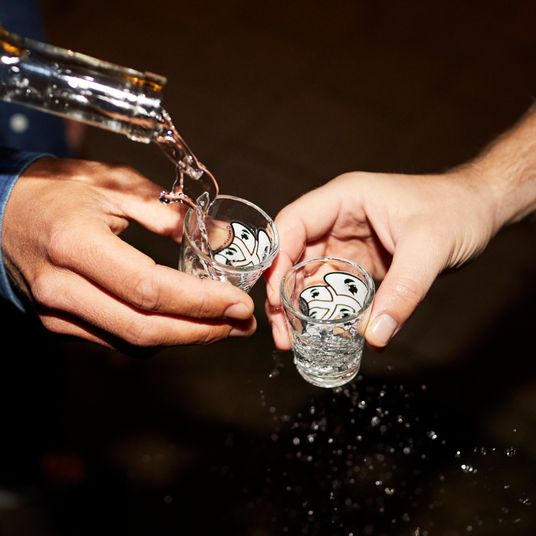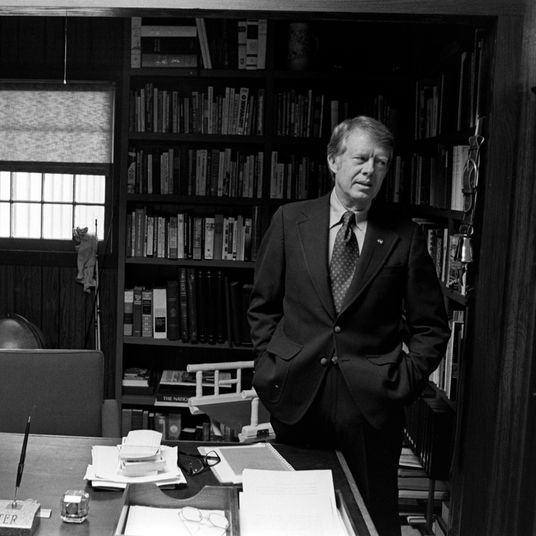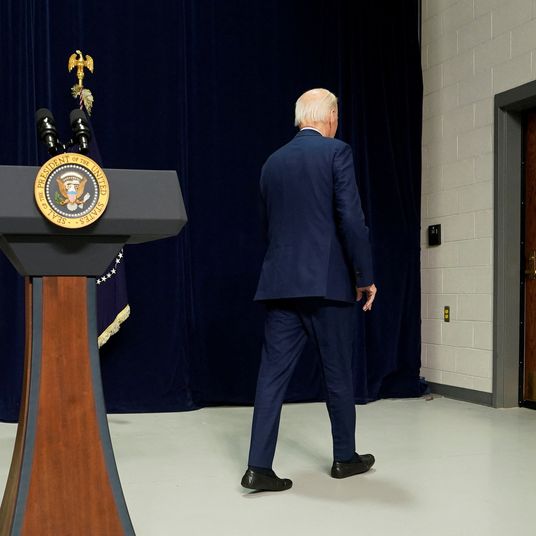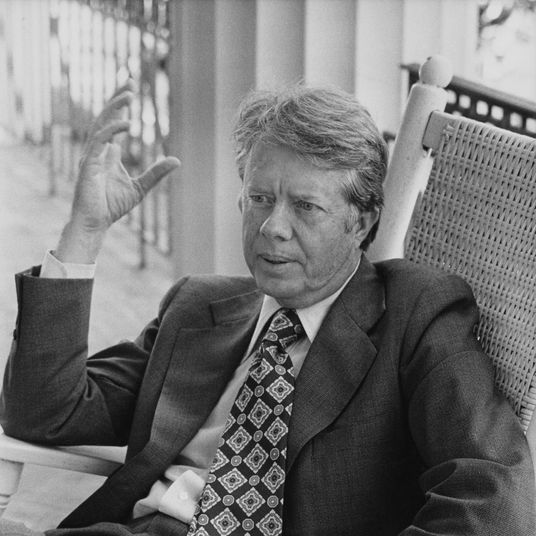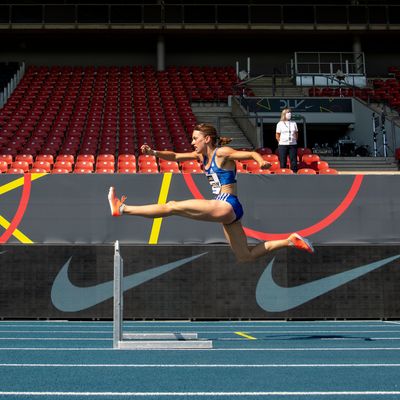
There is no Olympic event quite like the 400-meter hurdles. The flat 400-meter race is already considered to be one of the most punishing events in track and field, since it’s impossible to sprint all out for the entire distance. The hurdles make it even harder. There are ten of them, spaced 35 meters apart at a height of two and a half feet for women and three feet for men. To compete in the event, “you have to be a long jumper, a high jumper, with the ability to train like an 800-meter runner, and have enough fast twitch to train like a sprinter,” said Curtis Frye, who coached the U.S. men’s hurdlers at the 2016 Olympics.
It also means you have to have a game plan. “Four-hundred hurdlers are some of the smarter, more strategic, chess-plan athletes on the track,” said Lawrence “Boogie” Johnson, who is the coach of defending Olympic champion Dalilah Muhammad, a 31-year-old from Jamaica, Queens.
The special beauty of the race will come under greater focus this year. The two most anticipated events in track and field at the Tokyo Olympics are, in equal measure, the men’s 400-meter hurdles and the women’s 400-meter hurdles. Not since American Edwin Moses, the godfather of the event, went undefeated for nearly ten years in the 1970s and ’80s has the event received so much attention. “It’s a premium event again,” Leif Olav Alnes, the coach of Norway’s Karsten Warholm, one of the two favorites in the men’s race, said last week on a video call from Japan. “When the result is not a given, that is a gift to the public. I can feel the chills now.”
The men’s race is primarily a duel between American Rai Benjamin, a 24-year-old from Mount Vernon, New York, and Warholm, 25. Benjamin comfortably won the U.S. Olympic trials in June in 46.83 seconds, a time that missed Kevin Young’s 1992 world record by .05 seconds; five days after Benjamin’s near miss, Warholm ran it in 46.70 seconds to break Young’s record. When the two faced each other competitively for the first time, in 2019, Warholm won by .06 of a second. It was the first race in history in which two runners finished under 47 seconds.
The women’s race features a rematch of the top two finishers at the U.S. Olympic trials: Muhammad and 21-year-old New Jersey native Sydney McLaughlin. McLaughlin won the trials in 51.90 seconds, breaking Muhammad’s 2019 world record. Coming into that race, Muhammad’s training had been curtailed from contracting COVID-19 twice in the previous seven months and struggling with a subsequent chain reaction of illnesses and injuries. With only three weeks of serious training behind her, Muhammad still finished in 52.42 seconds, missing her former record by a quarter of a second. She will surely come to Tokyo in better condition.
All of them will have a strategy. The most important decision a 400-meter hurdler will make is how to set up their stride pattern in between the hurdles. “For men, the gold standard has always been to run a 13-step pattern for the entirety of the race,” Johnson said. Edwin Moses was the first to execute this, but few runners since have been able to replicate that. For women, running 15 steps in between hurdles for the race’s entirety is a rough equivalent. Yet maintaining the same stride length during an entire race can become difficult once fatigue sets in, forcing hurdlers to add a step or two during the race.
When Muhammad set her first world record in 2019, she ran the first eight hurdles using 15 strides between each hurdle and switched to 16 strides for the final two hurdles. When a runner adds a step to their stride pattern, two risks come into play. First, adding a step can slow down a runner. Additionally, it means that the runner will have to take the next hurdle on their non-dominant leg. This too could lead to a loss of time. At this year’s Olympic trials, Muhammad “switched at hurdle nine, and Sydney [McLaughlin] didn’t,” Johnson said, giving the advantage to her rival. “That ultimately was the tale of the tape right there.”
In addition to setting the world record, McLaughlin did something else extraordinary in that race. She ran the first five hurdles on a 14-step pattern. This allowed her to keep pace with Muhammad, who routinely goes out very fast early in the race, for the first 200 meters. “I knew Sydney would have to do something different to be as effective as she was against Dalilah,” Johnson said.
This season, the 21-year-old Brazilian Alison dos Santos, who is the number-three ranked 400-meter hurdler in the world and towers over his competitors at 6 feet 7 inches tall, has begun to incorporate a 12-step pattern for at least two hurdles on the back stretch of his races. No one has been able to do this since Kevin Young set the world record in 1992, not even Warholm and Benjamin. The two of them will likely run a 13-step pattern in the Olympics final, but that too can be difficult.
“It depends on the conditions,” Alnes, Warholm’s coach, said. “It depends on the opening speed.” Warholm, like Muhammad, is known for going out very fast at the start of his races. Alnes said, “Karsten has gone 13 all the way in several races, but then he needs to overstride at the end. He has been criticized for opening too fast. I totally disagree. I think he finishes too slow.” It’s likely that Dos Santos will continue using 12 steps for part of the race. Already this season, he has set the Brazilian national record no fewer than five times, to his current best of 47.34.
In order to have the flexibility to switch their stride pattern during the race, 400-meter hurdlers train to become ambidextrous with their legs. The process can take years and includes dragging five-pound weights on the non-dominant leg; jumping off that leg onto a box six, 12, 18, or 24 inches off the ground; and bounding 50 meters off the weaker leg and reducing the number of bounds it takes to cover the distance as the leg grows increasingly stronger.
In February, McLaughlin ran an indoor 60-meter hurdle race taking every hurdle on her non-dominant leg. She finished last. But the work helped her execute her game plan at the Olympic trials when she set the world record and took two hurdles off her weaker leg in the process.
The runner has to incorporate those switches into an internal rhythm to get the feel of a particular stride pattern. This is formed from running endless repeats of those patterns until the rhythm is practically unconscious in the athlete’s mind and body. “It’s like a dance,” Johnson said, “a choreography, and being able to do that choreography in a fatigued state. I tell Dalilah Muhammad, ‘You just got to do the dance.’ But doing the dance is being able to stay on step.”
Benjamin has more speed than Warholm — his best time in the 400-meter flat race is more than a half second faster than Warholm’s — but he has not yet mastered the hurdling technique. Warholm, on the other hand, has been lauded as a master technician, as though he isn’t jumping the hurdles but seamlessly running over them. Alnes sees another advantage. “The strongest point with him is his mind,” he said. “Karsten is descended from the Norwegian Vikings. The bloodline goes straight to them. Once he signs up for it, he will deliver. He’s going to be all-in. He is one hell of a warrior.”
However it plays out, “it is the most beautiful race for anyone to watch,” said Frye, the former U.S. Olympics hurdles coach. “It’s overcoming obstacles. It’s like the barriers in life. Once you get over one, another is coming. Life is a pattern of intermediate hurdles.”











